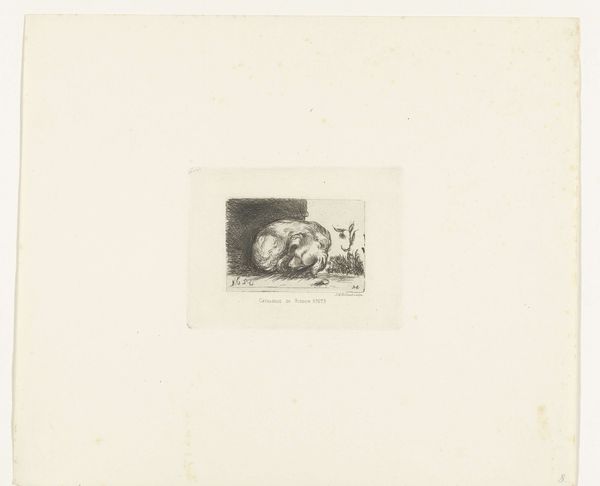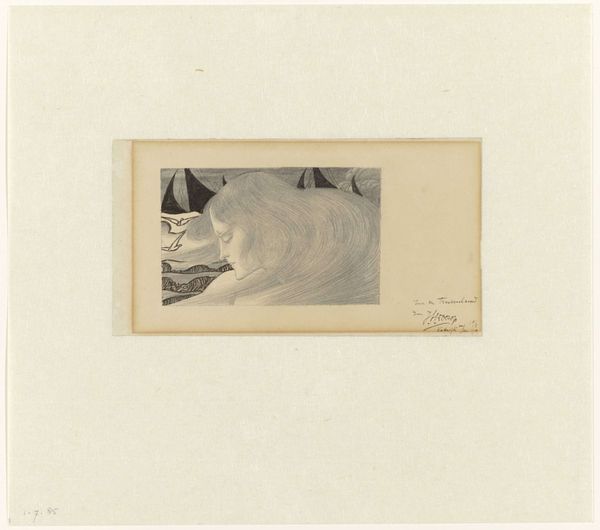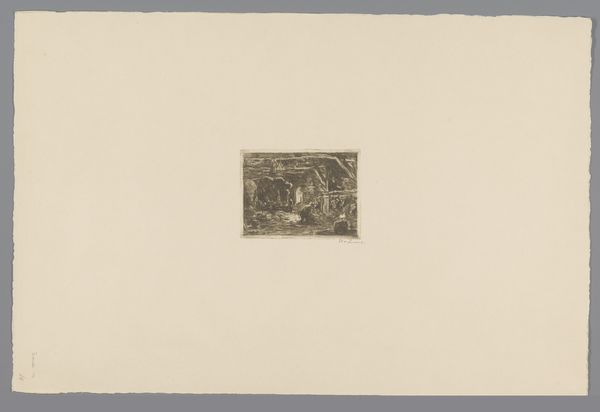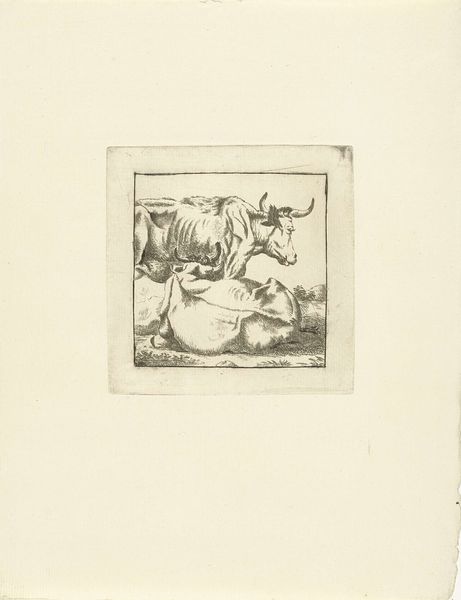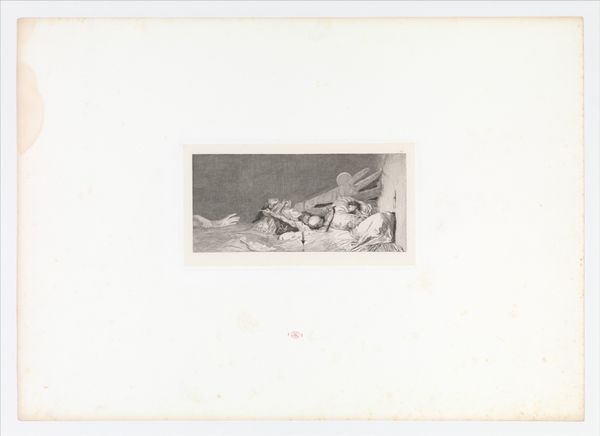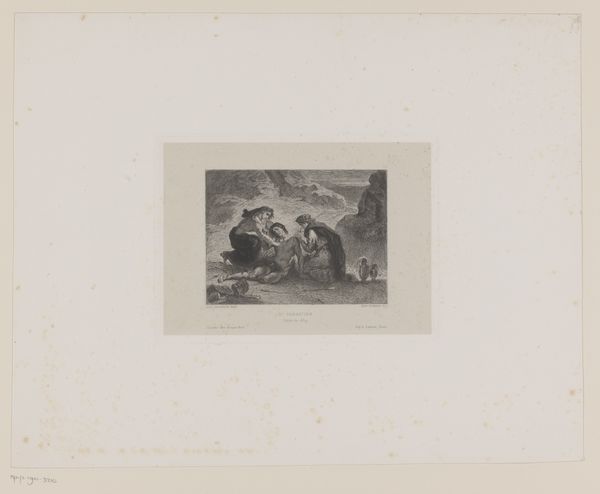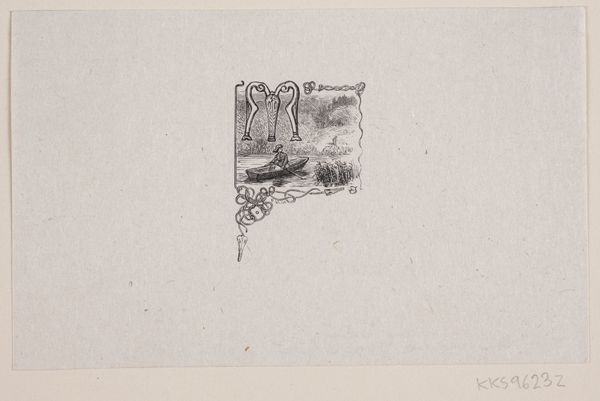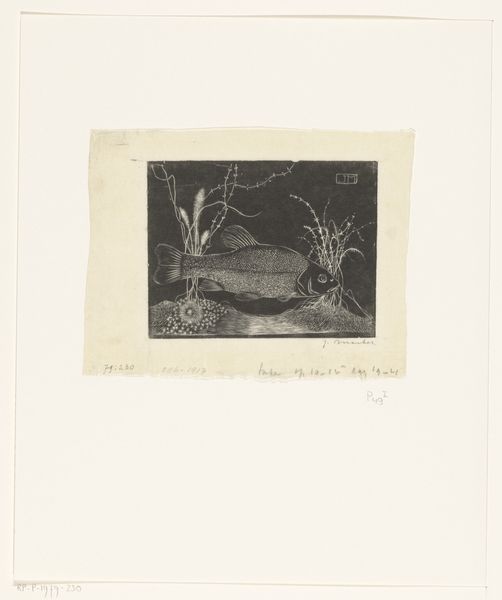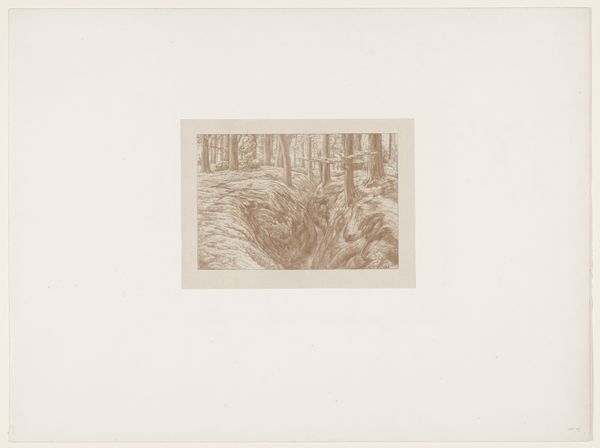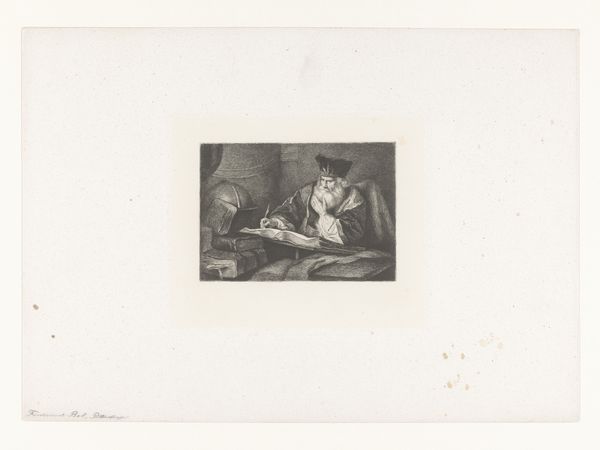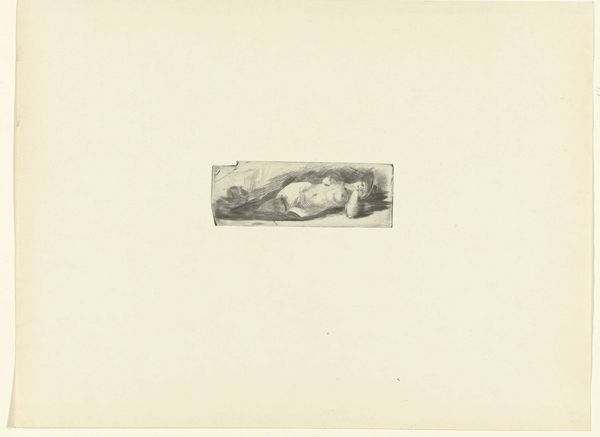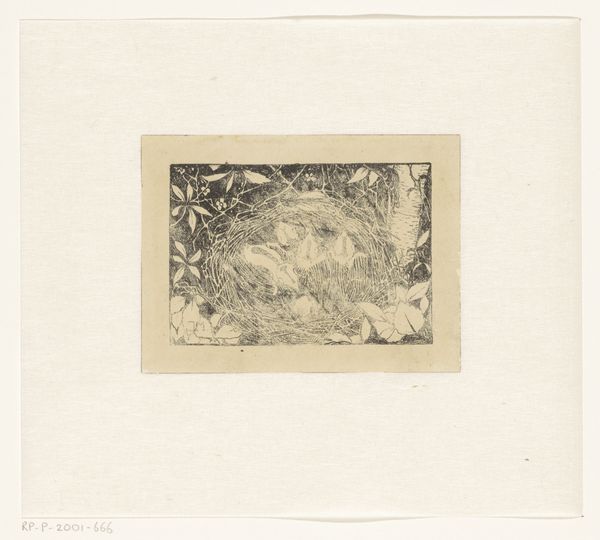
Dimensions: height 56 mm, width 107 mm
Copyright: Rijks Museum: Open Domain
Editor: This is "Brug op Corsica," a 1921 etching by Lodewijk Schelfhout. The small scale creates an intimate view of the Corsican landscape through a bridge. There's something so serene about it. How do you interpret this work, particularly given the time it was created? Curator: The serene quality you identify is certainly present, but let's consider it in the wake of the First World War. This etching, with its delicate lines and somewhat idyllic scene, could be seen as a conscious retreat from the industrialized horrors and traumas of the war. The bridge itself, in its function to overcome divides, can function as an enduring motif symbolizing transition and resolution amidst a fractured society still grappling with social and economic tensions. Does the relative emptiness depicted hint at that? Editor: That's a fascinating perspective. The stillness now feels a bit more loaded, as if suggesting a desire for escape, or perhaps the hope for a rebuilt, connected society. But is there also something to be said about landscape as a particularly gendered genre, considering that most landscape artists have historically been men? Curator: Absolutely. Traditional landscape art often implicitly reinforces a patriarchal view of nature as something to be conquered or surveyed, dominated. Schelfhout's somewhat subdued, delicate approach resists a domineering male gaze. Consider the scale, which invites close viewing instead of wide surveying. But also note the framing of the sailboat – could it perhaps represent a symbol of hope as society recovered, but hope mostly associated with a patriarchal culture in this era? How would you unpack this? Editor: I hadn't considered the sailboat carrying connotations tied to patriarchy, that’s a great connection to tease out. This conversation has totally transformed how I see what I initially thought was just a simple landscape print! Curator: Indeed. By examining the artistic choices within their historical and societal context, we can decode deeper meanings and social constructs.
Comments
No comments
Be the first to comment and join the conversation on the ultimate creative platform.
